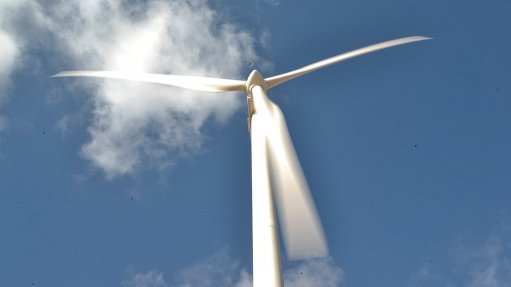
Breaking all-time records, renewables currently account for two-thirds of global net capacity additions, according to one of several reports about how renewable energy is powering ahead. The trend is set to continue.
“All renewables will grow at double the velocity of fossil fuels within the next five years,” said International Energy Agency (IEA) renewable energy division head Paolo Frankl, addressing delegates at the yearly Windaba in Cape Town.
He noted that solar photovoltaic (PV) had shot ahead of coal to become the global leader in net capacity growth. Despite wind power additions being a bit “bumpy” last year, wind power additions were “very close” to coal.
Frankl added that the growth was partly attributable to the incredible success in cutting the cost of renewables.
The cost of solar had halved from 2014 to 2017, with another halving of the price expected over the next three years, he said.
“Competitive bidding accelerates cost reductions. It puts the industry under enormous pressure. Price discovery through competitive auctions effectively reduces costs along the entire value chain,” he said.
China has been leading the push on renewable energy and has banned new coal power plants, with a sharp focus on the environment now embedded in China’s Constitution. It also has a new focus that it has dubbed ‘Beautiful China’.
“China will remain the undisputed leader in renewables growth. It is pulling the energy transition for the whole world. The US surprisingly has remained the second biggest market, despite federal policy uncertainty. This is because state policies and the fundamentals of renewables in the US remain very good,” said Frankl.
The IEA says China will generate 30% of the world’s electricity from wind by 2022.
Addressing real policy issues, India is surpassing the European Union in terms of growth.
Hydroelectric power dominates the renewables landscape in terms of scale in sub-Saharan Africa.
“We see things growing by 70% cumulative capacity. Hydro and solar are big, but wind also has an important share,” said Frankl.
He added that South Africa will make up 20% of Africa's share if policy and regulations on renewable energy are implemented in the next 12 months.
“Almost 40% of sub-Saharan Africa’s non-hydro electricity growth is from South Africa. The share of renewables in the region should increase from 29% in 2016 to 37% in 2022,” suggested the IEA.
It warned, however, that more flexible power systems, markets and rules would be needed to exploit the potential of renewable energy worldwide.
“If policies are bad, renewables will not come. If policies are good, the future is renewables,” said Frankl.
He added that flexibility was also essential. “We need to invest in all forms of flexibility. Wind and solar need better grids and inter-connection. We need more affordable storage.”
Meanwhile, global renewable energy policy network REN21 executive secretary Christine Lins told Windaba delegates that newly installed renewable power capacity set new records in 2016, with 161 GW added. Solar PV was the star performer in 2016, accounting for around 47% of the total additions.
She added that 2016 marked the third year in a row where global carbon dioxide emissions from the energy sector remained stable, despite 3% growth in the global economy and an increased demand for energy.
Solar and wind technologies attract the largest investments. Globally, 75 GW of solar PV was added in 2016, with 0.5 GW of it in South Africa, said Lins. China’s share of solar power was up 126% over 2015, while it also added the most wind power installations.
“There is an overwhelming consensus that renewable power will dominate in the future."
For 100% renewable energy to become a reality, all renewable energy technologies need to be deployed, suggested Lins.